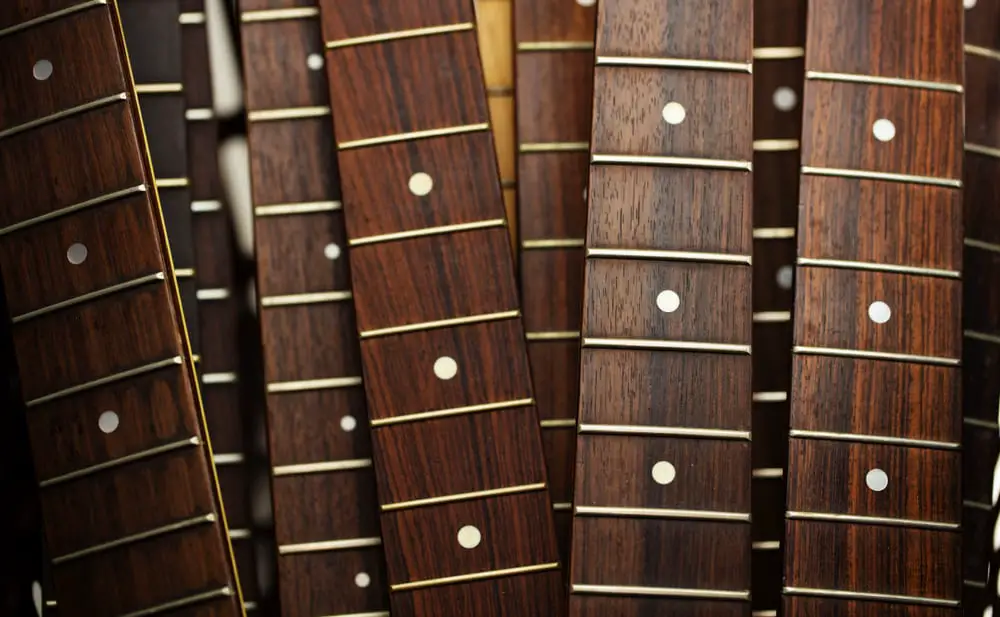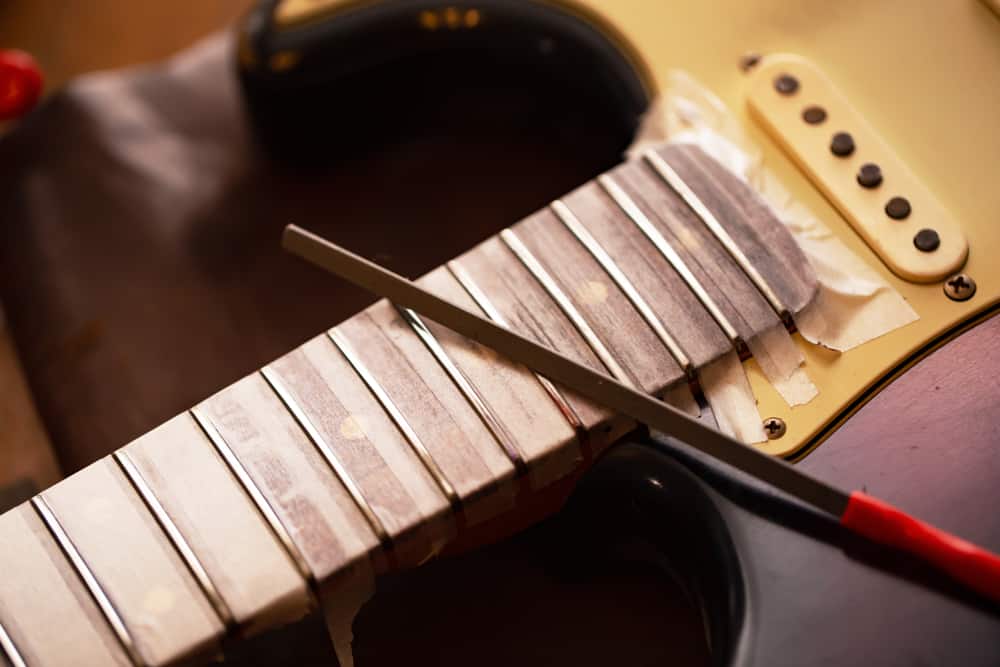
I always want what’s best for my guitar, and I’m sure you do too. That’s why we often clean the strings and fretboard, make sure they don’t have any scratches, and handle them with care.
We want the best out of them, and taking care of them and keeping them in good condition will bring that out. If you’ve been playing guitar for a long time, there’s a high chance you’ve had to refret your guitar before. If not, it might be a challenge the first time, but it’s a skill that’ll come in handy later.
Refretting will also give you a better understanding of how guitars are built. This is handy information for when you want to purchase a new one. So, when should you refret your guitar?
You don’t need to refret your guitar often, but it’s time for a refret when you begin to notice bumps and dents on your frets. In most cases, you can use your guitar for up to 20 years before needing a refret. But usually, a fret dressing is enough unless you play as much as eight hours every day.
If you’ve been playing for 20 years, I’m sure you’ve already heard about refretting. I’d recommend you keep reading, though; you might learn something new. For those of you who have no idea what to do, let’s go.
How To Tell if a Guitar Needs a Refret

As you play your guitar, the frets start to wear out, and you will begin to notice bumps and dents on the frets after a long period of continuous use.
These happen because the frets are made from a softer material than the guitar strings (usually 18% nickel silver, an alloy of nickel and silver). Continuous use during the years will cause wear as the strings slowly dig into the frets.
Some playing techniques like bends and slides will cause your frets to wear out faster. Pressing too hard on them will also speed up the wearing process. Another major cause of wear is sweat and continuous changes in the temperature and humidity of the environment.
When you start noting unpleasant tones and a lot of buzzing on your tuned guitar, it might be time to consider a refret. However, there are other signs to look out for. If your guitar frets have noticeable divots and there isn’t enough material on the frets to do a simple fret dressing, then you need to refret it.
You don’t need to refret your guitar if there is no visible and pronounced wear. If it sounds terrible and buzzing, you should consider a fret dressing, especially if you haven’t done any work on the fret before. Refretting should only be considered for guitars at least 15 years old and are used constantly.
Refretting and Fret Dressing
A refret involves replacing all the fret bars on the guitar with new ones, while fret dressing is shaving off the top of the frets with sandpaper to smoothen them. This gives them an even level, which gets rid of the buzzing and unpleasant sounds caused by bumps in the frets.
After performing fret dressings multiple times, you’ll eventually run out of material on the frets to shave off. At this point, a refret is required. If you haven’t done any fret dressing before and start noticing problems, a simple fret dressing should fix any issues.
Because fret dressing is less expensive and takes less time, it is better than a total refret. A complete refret requires the technician to remove each fret bar, clean the fretboard, and glue each fret bar back onto the board.
You might also get a different sound because different materials might be used. In summary, don’t go for a refret unless you have to.
Conclusion
Refretting sounds like a lot of work but you’re in luck, you only need a fret dressing every 3 to 4 years, and a complete refret will be required after about 20 years.
Depending on how much you use your guitar, you might have to do these earlier or later, but for the average user, these time periods work fine. Don’t pay too much attention to it. Your fret bars are supposed to wear out as you use them. Whenever you start noticing problems then, you can act on them.
Frequently Asked Questions
The harm to a vintage guitar’s value is negligible, and it may not cause any issues at all.
You could use the regular 18% nickel silver or opt for other materials like EVO gold, mainly for players who are allergic to nickel, or stainless steel, which is the most durable.









